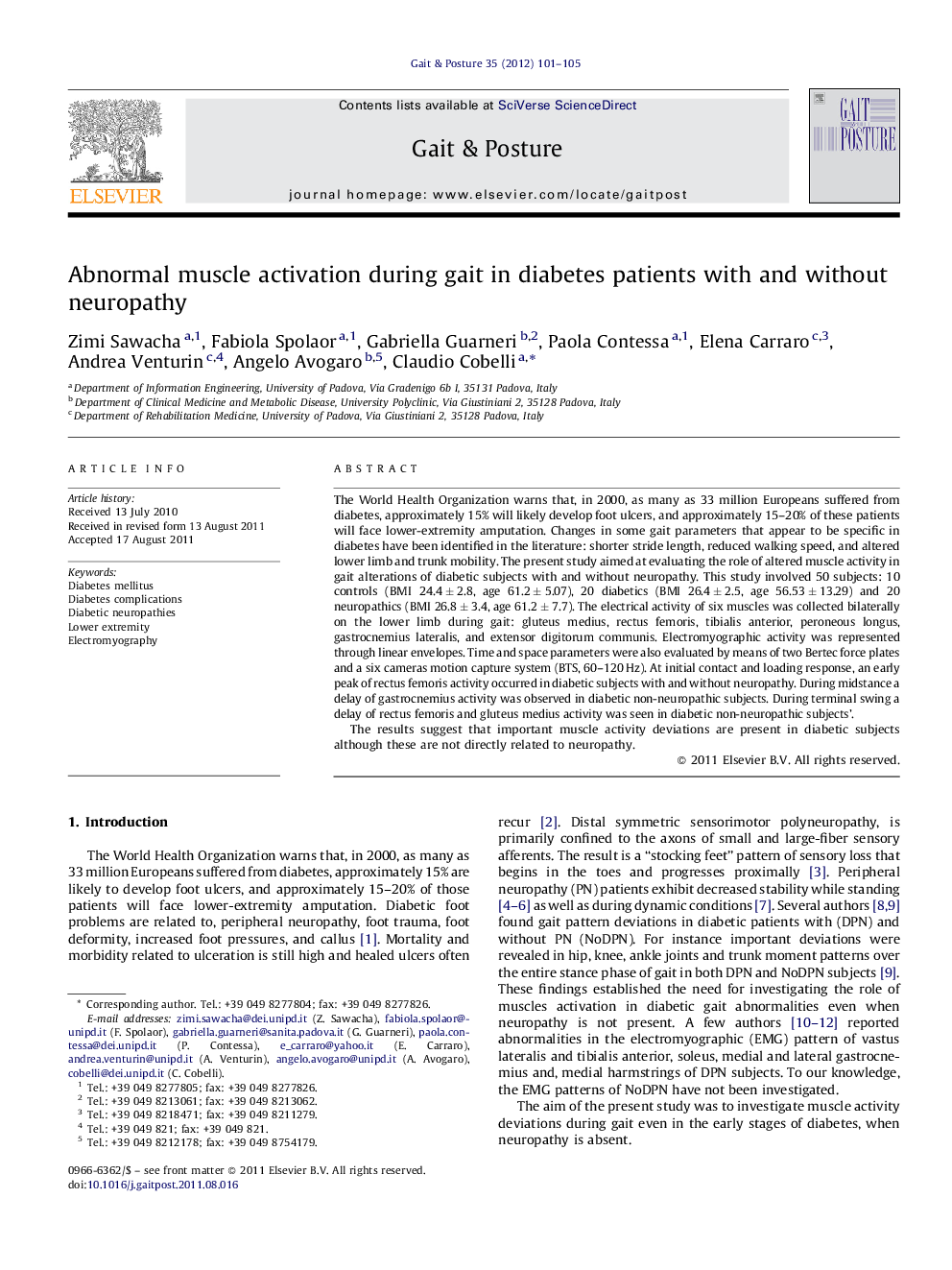| Article ID | Journal | Published Year | Pages | File Type |
|---|---|---|---|---|
| 6208213 | Gait & Posture | 2012 | 5 Pages |
The World Health Organization warns that, in 2000, as many as 33 million Europeans suffered from diabetes, approximately 15% will likely develop foot ulcers, and approximately 15-20% of these patients will face lower-extremity amputation. Changes in some gait parameters that appear to be specific in diabetes have been identified in the literature: shorter stride length, reduced walking speed, and altered lower limb and trunk mobility. The present study aimed at evaluating the role of altered muscle activity in gait alterations of diabetic subjects with and without neuropathy. This study involved 50 subjects: 10 controls (BMI 24.4 ± 2.8, age 61.2 ± 5.07), 20 diabetics (BMI 26.4 ± 2.5, age 56.53 ± 13.29) and 20 neuropathics (BMI 26.8 ± 3.4, age 61.2 ± 7.7). The electrical activity of six muscles was collected bilaterally on the lower limb during gait: gluteus medius, rectus femoris, tibialis anterior, peroneous longus, gastrocnemius lateralis, and extensor digitorum communis. Electromyographic activity was represented through linear envelopes. Time and space parameters were also evaluated by means of two Bertec force plates and a six cameras motion capture system (BTS, 60-120 Hz). At initial contact and loading response, an early peak of rectus femoris activity occurred in diabetic subjects with and without neuropathy. During midstance a delay of gastrocnemius activity was observed in diabetic non-neuropathic subjects. During terminal swing a delay of rectus femoris and gluteus medius activity was seen in diabetic non-neuropathic subjects'.The results suggest that important muscle activity deviations are present in diabetic subjects although these are not directly related to neuropathy.
⺠Abnormal muscle activation in diabetic and neuropathic subjects, comparison with controls. ⺠Lower limb muscle activation was acquired during gait through surface emg. ⺠Peak of envelope and its position within gait cycle, time and space parameters, were calculated. ⺠One-way Anova on both emg and gait time and space parameters. ⺠Statistically significant muscle alterations on non neuropathic subjects.
